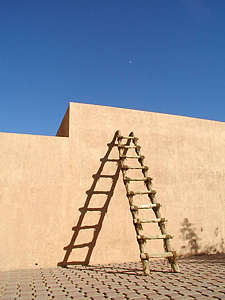
Hi again! We're just back from a long weekend visit to a new part of the Sultanate of Oman, arranged through the Emirates Natural History Group. It was a pleasant time of exploration and relaxation, reinforced by good company and meeting new friends. One of our new friends was Christopher and what an interesting character he was. In fact, my meeting with Christopher set my head buzzing about a developmental principle that is fundamental to good Child and Youth Care. Let me explain.
Christopher Wellington Koala is no ordinary character. You see, Christopher is for all intents and purposes a teddy bear. Except that calling Christopher a teddy bear is to dismiss, or at least minimize, his unique characteristics. First, Christopher is a male teddy. Second, he is a teddy in his mid-twenties. And third, amongst all the teddy bears I have ever met Christopher is extremely well-traveled. Christopher sat on his friend's lap during most of our trip and spoke to me at regular intervals through the voice of his friend. So why, might you ask is this teddy so different from others?

Portal to Yesteryear
Well, for a start, Christopher's friend is a distinguished academic of international renown. Christopher was purchased more than a quarter century ago by an equally distinguished husband who has since died leaving Christopher's friend a widow. Wherever she goes in the world, Christopher travels along. They look after each other in a bond of reciprocal caring. Christopher provides an emotional connection to a past relationship and symbolically shares new experiences and encounters.
In case you've not heard of the term before, it is worth taking note of the developmental construct articulated by Donald Winnicott in a paper called Transitional Objects and Transitional Phenomena (1953). Some transitional objects are more distinctive than others and are frequently notable amongst young children. Whether called “blankey" or “raggy"; whether a special doll or well-used soft toy, such transitional objects help children transition from one state of being to another “or from one place to another “providing an important sense of continuity and safety that reaches to the inner core of their being. As I thought about Christopher and the relationship he has had with my distinguished friend, I was reminded of a special comb carefully guarded in my traveling soap bag, an object picked up from the site of my mother's fatal car crash and emotionally treasured amongst my personal belongings ever since. If the truth be known, each of us has our special transitional objects that take on talismanic qualities as we move from one place to another.

Fill 'em up!
And what, you might ask, does all this mean for Child and Youth Care. For a start, do we pay attention to the meaning of transitional objects and their unique role for the young people with whom we work? Do we go out of our way to celebrate significant life events and relationships with young people using symbolic objects that help them during times of transition? It’s not about spending a lot of money. It's about observing and attending to that which is special for children “of all ages. I remember an incident during a family visit with Henry Maier. After watching our children play with Henry's treasure chest of toys, each of our children was given a present when we left, to be opened only after they had departed. The gift was a replica of the toy with which they had played most! That toy became a transitional object of special meaning to help them on their way.
Thanks Henry! And thanks Christopher Wellington Koala for reminding me.